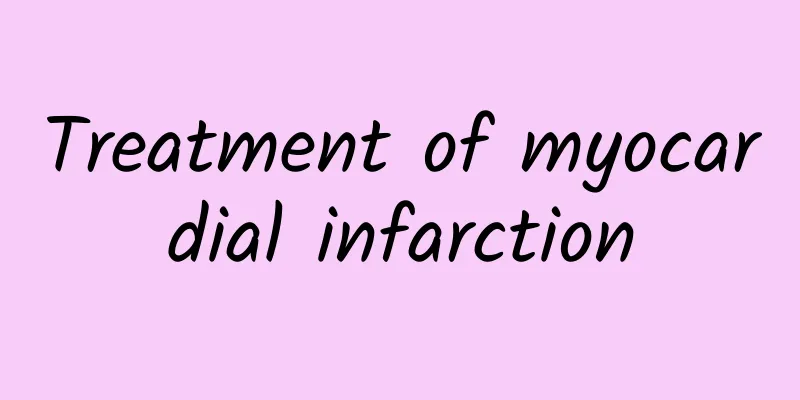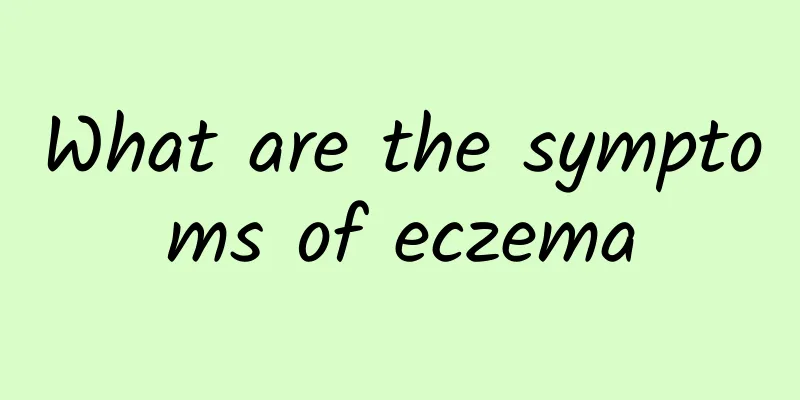Treatment of myocardial infarction

|
Myocardial infarction is a relatively dangerous disease because it can threaten our lives. In fact, think about it, our physical health is the key to whether we can live a normal life. No matter what kind of disease we suffer from, it will change our quality of life to some extent, and thus make us suffer from the disease. Therefore, only by thinking of ways to treat the disease can we improve the development of our condition and make us healthy. Only by having a healthy body can we do anything to improve the quality of our life. Different diseases affect our lives to different degrees. Only by correctly grasping the causes of these diseases and how to improve the pain caused by these diseases can we effectively prevent and control them. So what is the treatment for myocardial infarction? Acute myocardial infarction occurs suddenly and should be detected and treated early, with strengthened pre-hospitalization treatment. The principles of treatment are to save the dying myocardium, reduce the area of infarction, protect heart function, and deal with various complications in a timely manner. 1. Monitoring and general treatment Patients without complications should stay in bed for 1 to 3 days during the acute phase; receive oxygen; and undergo continuous ECG monitoring to observe changes in heart rate, heart rhythm, blood pressure, and respiration. For patients with hypotension or shock, monitor capillary wedge pressure and venous pressure when necessary. Low salt, low fat, eat small meals frequently, and keep bowel movements regular. After 3 days, patients without complications gradually transitioned to sitting in a chair next to the bed to eat, urinate, and move around indoors. Patients can usually be discharged from the hospital within 2 weeks. For patients with heart failure, severe arrhythmias, hypotension, etc., the bed rest time and discharge time need to be extended as appropriate. 2. Sedation and pain relief Small doses of intravenous morphine are the most effective analgesic; pethidine can also be used. Those who are irritable and nervous can be given diazepam (Valium) orally. 3. Adjust blood volume Establish intravenous access as soon as possible after admission, and slowly replenish fluids in the first 3 days, paying attention to the balance of intake and output. 4. Reperfusion therapy to reduce infarct area Reperfusion therapy is the main treatment measure for acute ST-segment elevation myocardial infarction. Opening the blocked coronary artery and restoring blood flow within 12 hours of onset can reduce the area of myocardial infarction and reduce mortality. The earlier the coronary artery is reopened, the greater the benefit to the patient. "Time is myocardium, time is life." Therefore, a diagnosis must be made as soon as possible for all patients with acute ST-segment elevation myocardial infarction, and a reperfusion therapy strategy must be developed as soon as possible. (1) Primary coronary intervention (PCI) In hospitals with emergency PCI conditions, if the first balloon dilatation can be completed within 90 minutes of the patient's arrival at the hospital, all patients with acute ST-segment elevation myocardial infarction within 12 hours of onset should undergo direct PCI treatment, with balloon dilatation to reopen the coronary artery and stent placement if necessary. In the acute phase, only the infarct-related artery is treated. Patients with cardiogenic shock should be treated with direct PCI regardless of the onset of the disease. Therefore, patients with acute ST-segment elevation myocardial infarction should seek treatment in a hospital with PCI facilities as much as possible. (2) Thrombolytic therapy If there are no conditions for emergency PCT treatment, or the first balloon dilatation cannot be completed within 90 minutes, thrombolytic therapy should be performed on patients with acute ST-segment elevation myocardial infarction within 12 hours of onset if the patient has no contraindications to thrombolytic therapy. Commonly used thrombolytic agents include urokinase, streptokinase and recombinant tissue plasminogen activator (rt-PA), which are administered by intravenous injection. The main complication of thrombolytic therapy is bleeding, the most serious of which is cerebral hemorrhage. After thrombolytic therapy, the patient should still be transferred to a hospital with PCI conditions for further treatment. Patients with non-ST-segment elevation myocardial infarction should not receive thrombolytic therapy. 5. Medication Treating myocardial infarction through different methods will bring different effects, but the purpose is the same because only in this way can we better deal with conditions such as myocardial infarction. The above introduces methods for treating myocardial infarction. Whether it is through analgesic treatment or drug treatment, as long as it can improve the progression of myocardial infarction, it can be used well. Patients with persistent chest pain who are not hypotensive may receive intravenous nitroglycerin. All patients without contraindications should take oral aspirin. Patients with drug-eluting stents should take clopidogrel for one year, while patients without stents can take it for one month. Patients who receive rt-PA thrombolysis or who do not receive thrombolytic therapy can receive subcutaneous injection of low molecular weight heparin or intravenous heparin for 3 to 5 days. Patients without contraindications should be given β-blockers. Patients without hypotension should be given renin-angiotensin transaminase inhibitors (ACEI), and those who cannot tolerate ACEI can use angiotensin receptor blockers (ARB). Verapamil or diltiazem may be given to patients with contraindications to beta-blockers (such as bronchospasm) who have persistent ischemia or atrial fibrillation or atrial flutter with rapid ventricular rate but without heart failure, left ventricular dysfunction, or atrioventricular block. All patients should be given statins. |
<<: Symptoms of rheumatoid arthritis
>>: Treatment of impotence in young people
Recommend
My face is the darkest color on my body. Does this mean my kidneys are not good?
A dark complexion is an obvious sign of kidney de...
Is extracorporeal ureteral lithotripsy dangerous?
After suffering from ureteral stones, there are m...
Treatment for inflamed toenails
Paronychia often occurs among teenagers or women....
What is digoxin?
Digoxin is a medium-acting cardiac glycoside drug...
Precautions for taking sugar pills
Sugar pills are mainly products of some polio vac...
Does anesthesia have any effect on the body?
In the course of some normal treatments, anesthes...
Top Ten Chinese Herbal Medicines for Removing Dampness
Although dietary therapy can have a certain effec...
Cerebral arteriosclerosis
Cerebral arteriosclerosis is the culprit of cereb...
I found a lump on my right chest.
If you have lumps on your chest, it may be a symp...
How to treat bad breath caused by gastrointestinal inflammation? Chinese medicine can cure bad breath by removing internal heat
When the weather is dry and the body loses water ...
When dampness is heavy, what Chinese medicine can be used to regulate
According to the theory of traditional Chinese me...
How to treat the azotemia stage of chronic renal failure?
For patients with chronic renal failure who are i...
What disease is it that causes my fingers to be stiff and numb and I can't make a fist when I wake up in the morning?
In my country, rheumatism is a common clinical di...
Symptoms of brain atrophy, the elderly should be alert
Brain atrophy is a very terrible disease. This di...
What are the TCM treatments for cerebral thrombosis?
Cerebral thrombosis is a common clinical disease....









